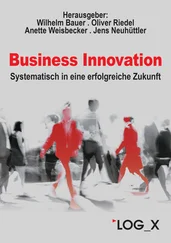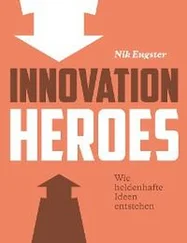He then introduced a new element into the dominant thinking of the time, according to which productivity was linked to the division of labor within the enterprise (Marshall 2010, p. 119), asserting that work could be divided over a geographical area, between different entities. This is the industrial district, which he defines as the concentration of businesses and skilled craftsmen within a geographically limited space. Marshall sees three fundamental aspects to this: specialist employees, complementary industries and a permanent exchange of information and knowledge. These elements create a pool of skilled workers, thus making the district an efficient labor market. He explains the sustainability of the location of businesses in the same area using the principle of externalities and particularly economies of scale that would reduce production costs. Marshall distinguishes between internal economies of scale, derived from the resources of the businesses themselves, and external economies, obtained through the close proximity of similar but specialized businesses at a specific point in the production process. Moreover, since not all firms can afford all machines, the pooling of equipment allows each to increase its efficiency, without having to make heavy investments. Marshall’s original, but insufficiently supported by empirical data, contribution is his concept of “industrial atmosphere”, in which he describes the significance of knowledge transfer between enterprises, as well as transmission between colleagues, neighbors, members of the same family, etc.:
The secrets of industry cease to be secrets; they are, so to speak, in the air, and children learn many of them unconsciously. Work well done is immediately recognized and the merits of inventions and improvements in machinery, processes, and general organization are discussed within the industry straight away. If someone comes up with a new idea, it is immediately taken up by others and combined with suggestions of their own and thus becomes the source of other new ideas (Marshall 1990, p. 160).
This therefore gave pride of place to interindividual and intergenerational relations, fostering an atmosphere conducive to learning and the dissemination of knowledge. Nevertheless, at the end of the 19th century, Marshall’s industrial district was largely confined to a theoretical conceptualization on the eve of the Fordist period, based on the model of the large enterprise. It was not until the 1970s that the concept was revisited by Italian studies of the Third Italy, then taken up again in France.
1.1.2. The first Italian districts and their influence in France
At the end of the 1970s, sociologists Arnaldo Bagnasco and Carlo Trigilia (1977, 1984, 1988) and economist Sebastiano Brusco (1982, 1986) published their research on the Third Italy, the term used to describe regions referred to as intermediate because of their geographical location between the highly industrial regions of northwestern Italy and the Mezzogiorno, characterized by a lower level of economic development. The Third Italy specializes “in traditional (clothing, footwear, leather, furniture, etc.) or more modern (small mechanics, electrical engineering, etc.) activities, whose production process can be easily broken down” (Daumas 2007, p. 133). The industrial organization of this area is characterized by a strong presence of small and medium-sized enterprises that participate only in certain phases of production and do not integrate a vertical model into their processes (as opposed to the mass production processes of large factories, especially in automobile production, further north). This would therefore be a dynamic specific to small businesses (Bagnasco 1977).
These early studies emphasized the social characteristics of this region and, in particular, the family ties in the cooperation of businesses and the learning of trades. In these regions, described as “urbanized countryside”, there would be a solidarity of the rural family at the time of the creation of an artisanal or commercial activity, succeeding or completing the original agricultural activity and then finding the political, logistical and social resources from medium-sized towns of the region. The network of parishes, especially in Veneto, is also highlighted as a source of information and exchange of know-how necessary for the creation of small businesses. The authors thus mobilize the Bourdieusian concept of social capital, as a “durable network of interknowledge and interrecognition relations of varying degrees of institutionalization” (Bourdieu 1980, p. 2), made available to potential entrepreneurs belonging to this local community. The focus is on interindividual relations and the cultural environment. Based on this work and his own analysis of the province of Prato in Tuscany, Giacommo Beccatini proposes a definition of the Italian district (Becattini 1989):
A socioterritorial entity, characterized by the active association, in a circumscribed and historically determined territorial area, of a community of people and a population of industrial enterprises. In the district, unlike what happens in other environments, such as the manufacturing city, community and business tend to, as it were, interpenetrate (Daumas 2007, p. 134).
Studies on the Third Italy thus revive and further develop Marshall’s concept of the district. They particularly emphasize the local accumulation of know-how, individual interdependencies and the interpenetration of businesses with a community of people.
Inspired by the Italian studies, research is also being conducted in France with the aim of identifying “territorial configurations similar to districts” (Guillaume 2008, p. 298) in other countries. This has led to work on “localized industrial systems” (Raveyre and Saglio 1984), as well as, under the impetus of a team from Grenoble, the economists Courlet and Pecqueur addressed “local productive systems” (Courlet and Pecqueur 1991, 1992). Raveyre and Saglio worked on the Oyonnax agglomeration, where industry was based on a single activity: the production of plastics. For them, this fabric of SMEs in the same sector cannot be analyzed as a scaled-down large enterprise, because the conflicts of power and the relations of competition and cooperation are not regulated in the same way as in large groups. These SMEs are involved in complex systems of relations (Raveyre and Saglio 1984, p. 159). For them, what is important is the local social act into which industrial firms are inserted, because defining a localized industry “is not a simple statistical aggregation operation” ( ibid ., p. 160). They seek to look beyond the simple observation of a competitive situation and to determine the social construct of the localized industrial system, which is composed of a set of historically constituted standards and rules of conduct ( ibid ., p. 168). In the localized industrial system, collective mutual aid exists between firms in the event of difficulties or necessity.
On the other hand, Raveyre and Saglio consider that cooperation is not only defensive but also oriented towards strategies of development and adaptation of the technical potential of local industries ( ibid ., p. 165). The system produces, through innovations, a disruption of the organization of work that translates into new trades and new training. Finally, another key element for the authors lies in the relations that the system maintains with local political authorities, which constitute a fundamental issue for the system’s sustainability ( ibid ., p. 174). In the local production systems studied by Courlet and Pecqueur (1992), the definition is broader than for the districts. They may therefore refer to similar activities in which enterprises cooperate on peripheral dimensions (transport, exports, etc.) or to complementary activities (Courlet 2002, p. 89) and, as a result, a network of subcontractors emerges (Guillaume 2008, p. 298). In some cases, businesses do not necessarily belong to the same sector and, unlike the district, do not participate in the multiple stages of industrial production. Moreover, the relationships are not familial, but professional and informal in a local productive system. In his work on the “Alpine furrow”, however, the geographer Bernard Pecqueur (1995) qualifies this aspect and identifies relatively poor direct relations between businesses. Each has its own regional, national and even European and global geography, and what link businesses together are the territorial resources they share. Housing, amenities, infrastructure, facilities and the skilled labor market thus tend to unify them.
Читать дальше












